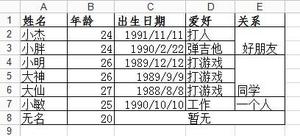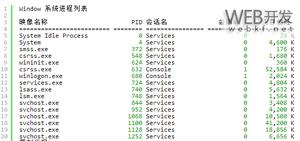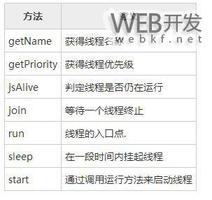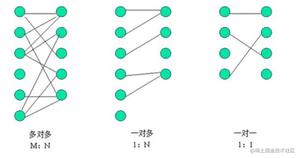Java8Streamreduce操作

首先来看一下Reduce三种形式:
S.N.
方法说明
1
Optional<T> reduce(BinaryOperator<T> accumulator);
对Stream中的数据通过累加器accumulator迭代计算,最终得到一个Optional对象
2
T reduce(T identity, BinaryOperator<T> accumulator);
给定一个初始值identity,通过累加器accumulator迭代计算,得到一个同Stream中数据同类型的结果
3
<U> U reduce(U identity, BiFunction<U, ? super T, U> accumulator, BinaryOperator<U> combiner);
给定一个初始值identity,通过累加器accumulator迭代计算,得到一个identity类型的结果,第三个参数用于使用并行流时合并结果
1. Optional<T> reduce(BinaryOperator<T> accumulator);
首先看一下函数式接口BinaryOperator,继承于BiFunction,Bifunction中有一个apply方法,接收两个参数,返回一个结果。如下:
@FunctionalInterfacepublic interface BinaryOperator<T> extends BiFunction<T,T,T> {
}
@FunctionalInterface
public interface BiFunction<T, U, R> {
R apply(T t, U u);
也就是说,reduce(BinaryOperator<T> accumulator)方法需要一个函数式接口参数,该函数式接口需要两个参数,返回一个结果(reduce中返回的结果会作为下次累加器计算的第一个参数),也就是所讲的累加器。所以reduce(BinaryOperator<T> accumulator)方法可以如下调用:
@Test
public void reduceTest() {
Optional accResult = Stream.of(1, 2, 3, 4)
.reduce((acc, item) -> {
System.out.println("acc : " + acc);
acc += item;
System.out.println("item: " + item);
System.out.println("acc+ : " + acc);
System.out.println("--------");
return acc;
});
System.out.println(accResult);
}
运行结果:
acc : 1item: 2
acc+ : 3
--------
acc : 3
item: 3
acc+ : 6
--------
acc : 6
item: 4
acc+ : 10
--------
Optional[10]
2. T reduce(T identity, BinaryOperator<T> accumulator);
提供一个跟Stream中数据同类型的初始值identity,通过累加器accumulator迭代计算Stream中的数据,得到一个跟Stream中数据相同类型的最终结果,可以如下调用:
@Testpublic void reduceTest1() {
int accResult = Stream.of(1, 2, 3, 4)
.reduce(100, (acc, item) -> {
System.out.println("acc : " + acc);
acc += item;
System.out.println("item: " + item);
System.out.println("acc+ : " + acc);
System.out.println("--------");
return acc;
});
System.out.println(accResult);
}
运行结果:
acc : 100item: 1
acc+ : 101
--------
acc : 101
item: 2
acc+ : 103
--------
acc : 103
item: 3
acc+ : 106
--------
acc : 106
item: 4
acc+ : 110
--------
110
3. <U> U reduce(U identity, BiFunction<U, ? super T, U> accumulator, BinaryOperator<U> combiner);
首先看一下BiFunction的三个泛型类型分别是U、 ? super T、U,参考BiFunction函数式接口apply方法定义可以知道,累加器累加器通过类型为U和? super T的两个输入值计算得到一个U类型的结果返回。也就是说这种reduce方法,提供一个不同于Stream中数据类型的初始值,通过累加器规则迭代计算Stream中的数据,最终得到一个同初始值同类型的结果。看一个调用示例:
@Test
public void reduceTest2() {
ArrayList<Integer> accResult_ = Stream.of(2, 3, 4)
.reduce(Lists.newArrayList(1),
(acc, item) -> {
acc.add(item);
System.out.println("item: " + item);
System.out.println("acc+ : " + acc);
System.out.println("BiFunction");
return acc;
}, (acc, item) -> {
System.out.println("BinaryOperator");
acc.addAll(item);
System.out.println("item: " + item);
System.out.println("acc+ : " + acc);
System.out.println("--------");
return acc;
}
);
System.out.println("accResult_: " + accResult_);
}
运行结果:
item: 2acc+ : [1, 2]
BiFunction
item: 3
acc+ : [1, 2, 3]
BiFunction
item: 4
acc+ : [1, 2, 3, 4]
BiFunction
accResult_: [1, 2, 3, 4]
通过运行结果可以看出,第三个参数定义的规则并没有执行。这是因为reduce的第三个参数是在使用parallelStream的reduce操作时,合并各个流结果的,本例中使用的是stream,所以第三个参数是不起作用的。上述示例,提供一个只有一个元素1的arrayList,通过累加器迭代,将stream中的数据添加到arrayList中。
以上就是stream中reduce的三种用法,用来通过特定的规则计算stream中的值,得到一个最终结果,其实还是很简单的。推荐一篇刚看到的讲解Java8 Stream的文章,Java Stream 详解,我陆陆续续也写了好几篇关于Java8新特性的文章了,但是比较下来并没有上面那篇文写的那么体系,之后的文章可以借鉴一下那篇文章的组织方法。
以上是 Java8Streamreduce操作 的全部内容, 来源链接: utcz.com/z/513639.html









